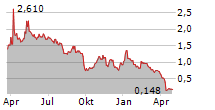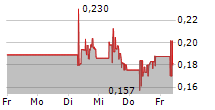
Updated Phase 3 analyses position PL9643 as a potential first-in-class therapy achieving full symptom resolution in dry eye disease.
- Responder analyses demonstrated statistically significant symptom clearing (resolution) across multiple endpoints in patients treated with PL9643, compared to placebo.
- Six of 13 symptom endpoints showed a significantly higher percentage of patients in the PL9643 group achieving complete symptom resolution compared to placebo (p<0.05).
- This level of symptom clearing has not been achieved by any FDA-approved therapy for dry eye disease.
- Symptom Composite Score (a measure of dry eye symptom improvement) for PL9643-treated patients showed:
- Statistically significant symptom resolution by week 2.
- Continued improvement through week 12 with no plateau.
- In contrast, placebo-treated patients showed minimal improvement that plateaued early.
- FDA approval guidance (2020) supports the use of responder analysis to demonstrate symptom improvement.
- This includes showing a statistically significant difference in the percentage of patients achieving complete resolution of a symptom - a threshold PL9643 met across multiple symptom endpoints.
- Six of 13 symptom endpoints showed a significantly higher percentage of patients in the PL9643 group achieving complete symptom resolution compared to placebo (p<0.05).
CRANBURY, N.J., April 29, 2025 /PRNewswire/ -- Palatin Technologies, Inc. (NYSE American: PTN), a biopharmaceutical company developing first-in-class medicines based on molecules that modulate the activity of the melanocortin receptor system, today announced updated results from responder analyses of its pivotal Phase 3 MELODY-1 clinical trial evaluating the safety and efficacy of PL9643 versus placebo in the treatment of dry eye disease (DED).
The updated findings further strengthen PL9643's clinical profile, highlighting its potential to address a critical unmet need in DED by achieving statistically significant complete symptom resolution across multiple symptom endpoints - a level of improvement not seen with any currently approved DED therapies.
"Achieving statistically significant symptom resolution across multiple endpoints, a first among dry eye therapies, is a major breakthrough that could transform treatment," said Carl Spana, Ph.D., President and CEO of Palatin Technologies. "These results reinforce PL9643's potential as a best-in-class therapy with a differentiated mechanism of action. Combined with its rapid, sustained efficacy and excellent safety and tolerability profile, PL9643 offers a compelling new option for patients. Critically, these outcomes align with key FDA approval criteria for symptom improvement based on responder analyses."
Key Findings:
Responder analysis was conducted to evaluate the percentage of patients achieving complete symptom clearing (resolution) across 13 pre-specified symptom endpoints. Separately, the Symptom Composite Score, based on seven Visual Analog Scale (VAS) symptom ratings, was used to quantify overall symptom burden from the patient's perspective. This score averages individual VAS ratings to provide a comprehensive assessment of symptom improvement. The detailed analyses have been accepted for presentation at an upcoming medical conference.
- Statistically Significant Symptom Clearing (Resolution) After 12 Weeks:
- In 6 of the 13 symptom endpoints, a significantly higher percentage of patients treated with PL9643 achieved complete symptom resolution compared to placebo (p< 0.05) at 12 weeks.
- This level of symptom clearing has not been achieved by any FDA-approved dry eye therapies to date.
- In 6 of the 13 symptom endpoints, a significantly higher percentage of patients treated with PL9643 achieved complete symptom resolution compared to placebo (p< 0.05) at 12 weeks.
- Early and Sustained Symptom Resolution:
- The Symptom Composite Score for PL9643-treated patients showed statistically significant symptom resolution at two weeks, with continued improvement through 12 weeks and no signs of plateau.
- In contrast, the placebo group showed minimal improvement that quickly plateaued.
- Across all 13 symptom endpoints, a greater percentage of patients in the PL9643 group achieved complete symptom resolution compared to those receiving placebo.
- Symptom clearing with PL9643 was evident as early as two weeks, with an increasing number of symptoms reaching statistical significance from week 4 through week 12 - consistent with the resolution of inflammation, the mechanism of action of melanocortin agonists.
- The Symptom Composite Score for PL9643-treated patients showed statistically significant symptom resolution at two weeks, with continued improvement through 12 weeks and no signs of plateau.
- Regulatory Relevance:
- FDA approval guidance for dry eye drug development (2020) supports the use of responder analyses to demonstrate symptom improvement, requiring a statistically significant difference in the proportion of patients achieving complete symptom resolution (complete clearing of a symptom) - a key criterion met by PL9643.
"This latest analyses provides critical insights into PL9643's clinical benefit," said Michael Raizman, M.D., Chief Medical Officer of Palatin Technologies. "Demonstrating statistically significant improvement in the Symptom Composite Score - especially as early as week 2 and sustained through week 12 - strongly signals meaningful patient benefit. Coupled with an excellent safety and tolerability profile, PL9643 has the potential to deliver a more consistent and impactful benefit than currently available therapies."
Dr. Spana continued, "No currently approved DED treatment offers PL9643's exceptional safety and tolerability profile, rapid onset of efficacy, and statistically significant results across multiple symptom and sign endpoints - including a significantly higher percentage of patients achieving complete symptom resolution, which is a highly differentiating factor from currently approved therapies. These findings position PL9643 as a compelling, potentially best-in-class treatment for dry eye disease. We are actively progressing discussions with potential collaboration partners and aim to finalize a deal in the second half of this year."
The remaining Phase 3 clinical program consists of two studies, MELODY-2 and MELODY-3, each evaluating both sign and symptom endpoints. Subject to securing a collaboration and funding, patient enrollment could begin in the second half of this year, with topline data in the second half of next year.
Palatin successfully completed MELODY-1, its first Phase 3 study, last year. The co-primary symptom endpoint of pain met statistical significance (P<0.025), and 7 secondary symptom endpoints met statistical significance (P<0.05), at the 12-week treatment period. The Phase 3 MELODY-1 trial was a multi-center, randomized, double-masked and vehicle-controlled study that enrolled 575 patients at sites in the U.S. The trial evaluated the safety and efficacy of the melanocortin agonist, PL9643 ophthalmic solution after treatment for 12 weeks, compared to placebo in patients with moderate-to-severe DED, for multiple sign and symptom endpoints. Safety analysis from the Phase 3 MELODY-1 trial indicated PL9643 was well-tolerated.
PL9643 represents an opportunity to bring relief to the millions of dry eye sufferers. While DED is one of the most common ocular disorders, affecting an estimated 38 million people in the U.S., only about 18 million are diagnosed and less than 10% of those diagnosed are treated with a prescription product. This shows the significant unmet medical need for an effective treatment that also has an excellent safety and tolerability profile.1 The dry eye disease market size is estimated at $6.11 billion in 2024, and is expected to reach $7.46 billion by 2029, growing at a CAGR of 4.09% during the forecast period (2024-2029).2
About Dry Eye Disease (DED)
Dry eye disease is a common inflammatory disease that, left untreated, can become extremely painful and lead to permanent damage to the cornea and vision. DED affects the cornea and conjunctiva of the eye resulting in irritation, redness, pain, and blurred vision. The disease is characterized by insufficient moisture and lubrication in the anterior surface of the eye, leading to dryness, inflammation, pain, discomfort, irritation, diminished quality of life, and in severe cases, permanent vision impairment. Existing therapy for DED is generally regarded as inadequate by many physicians and patients and often requires months to demonstrate activity.
About Melanocortin Receptor Agonists and Inflammation
The melanocortin receptor ("MCR") system has effects on inflammation, immune system responses, metabolism, food intake, and sexual function. There are five melanocortin receptors, MC1R through MC5R. Modulation of these receptors, through use of receptor-specific agonists, which activate receptor function, or receptor-specific antagonists, which block receptor function, can have medically significant pharmacological effects. Many tissues and immune cells located in the eye (and other places, like the gut and kidney) express melanocortin receptors, empowering our opportunity to directly activate natural pathways to resolve disease inflammation.
About Palatin
Palatin is a biopharmaceutical company developing first-in-class medicines based on molecules that modulate the activity of the melanocortin receptor systems, with targeted, receptor-specific product candidates for the treatment of diseases with significant unmet medical need and commercial potential. Palatin's strategy is to develop products and then form marketing collaborations to maximize their commercial potential. For additional information regarding Palatin, please visit Palatin's website at www.Palatin.com and follow Palatin on Twitter at @PalatinTech.
Forward-looking Statements
Statements in this press release that are not historical facts, including statements about future expectations of Palatin Technologies, Inc., such as statements about Palatin products in development, clinical trial results, potential actions by regulatory agencies, regulatory plans, development programs, proposed indications for product candidates, and market potential for product candidates are "forward-looking statements" within the meaning of Section 27A of the Securities Act of 1933, Section 21E of the Securities Exchange Act of 1934 and as that term is defined in the Private Securities Litigation Reform Act of 1995. Palatin intends that such forward-looking statements be subject to the safe harbors created thereby. Such forward-looking statements involve known and unknown risks, uncertainties and other factors that could cause Palatin's actual results to be materially different from its historical results or from any results expressed or implied by such forward-looking statements. Palatin's actual results may differ materially from those discussed in the forward-looking statements for reasons including, but not limited to, results of clinical trials, regulatory actions by the FDA and other regulatory and the need for regulatory approvals, Palatin's ability to fund development of its technology and establish and successfully complete clinical trials, the length of time and cost required to complete clinical trials and submit applications for regulatory approvals, products developed by competing pharmaceutical, biopharmaceutical and biotechnology companies, commercial acceptance of Palatin's products, and other factors discussed in Palatin's periodic filings with the Securities and Exchange Commission. Palatin is not responsible for updating events that occur after the date of this press release.
Palatin Technologies® is a registered trademark of Palatin Technologies, Inc.
References
1.Market Scope 2023 Dry Eye Product Market Review; does not include OTC artificial tears and other Rx anti-inflammatory and tear stimulants.
2.Mordor Intelligence - Dry Eye Disease Market Size & Share Analysis - Growth Trends & Forecasts (2024-2029).
SOURCE Palatin Technologies, Inc.



